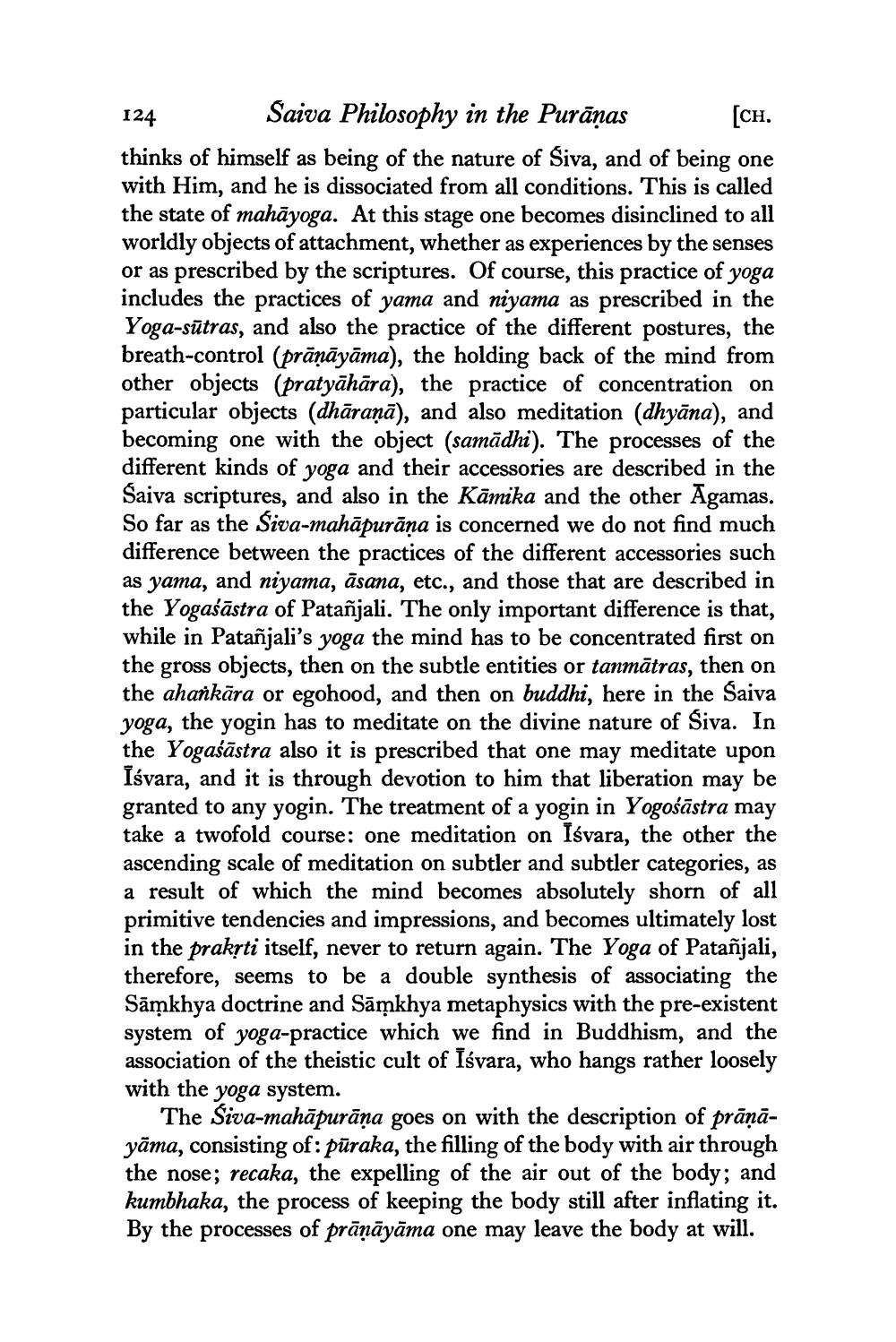________________
124
Saiva Philosophy in the Purāṇas [CH. thinks of himself as being of the nature of Siva, and of being one with Him, and he is dissociated from all conditions. This is called the state of mahāyoga. At this stage one becomes disinclined to all worldly objects of attachment, whether as experiences by the senses or as prescribed by the scriptures. Of course, this practice of yoga includes the practices of yama and niyama as prescribed in the Yoga-sūtras, and also the practice of the different postures, the breath-control (prānāyāma), the holding back of the mind from other objects (pratyāhāra), the practice of concentration on particular objects (dhāraņā), and also meditation (dhyāna), and becoming one with the object (samādhi). The processes of the different kinds of yoga and their accessories are described in the Saiva scriptures, and also in the Kāmika and the other Agamas. So far as the Siva-mahāpurāna is concerned we do not find much difference between the practices of the different accessories such as yama, and niyama, āsana, etc., and those that are described in the Yogaśāstra of Patañjali. The only important difference is that, while in Patañjali's yoga the mind has to be concentrated first on the gross objects, then on the subtle entities or tanmātras, then on the ahankāra or egohood, and then on buddhi, here in the Saiva yoga, the yogin has to meditate on the divine nature of Siva. In the Yogaśāstra also it is prescribed that one may meditate upon īśvara, and it is through devotion to him that liberation may be granted to any yogin. The treatment of a yogin in Yogośāstra may take a twofold course: one meditation on Iśvara, the other the ascending scale of meditation on subtler and subtler categories, as a result of which the mind becomes absolutely shorn of all primitive tendencies and impressions, and becomes ultimately lost in the prakrti itself, never to return again. The Yoga of Patañjali, therefore, seems to be a double synthesis of associating the Sāmkhya doctrine and Sāmkhya metaphysics with the pre-existent system of yoga-practice which we find in Buddhism, and the association of the theistic cult of īśvara, who hangs rather loosely with the yoga system.
The Siva-mahāpurāņa goes on with the description of prāņāyāma, consisting of: pūraka, the filling of the body with air through the nose; recaka, the expelling of the air out of the body; and kumbhaka, the process of keeping the body still after inflating it. By the processes of prāņāyāma one may leave the body at will.




